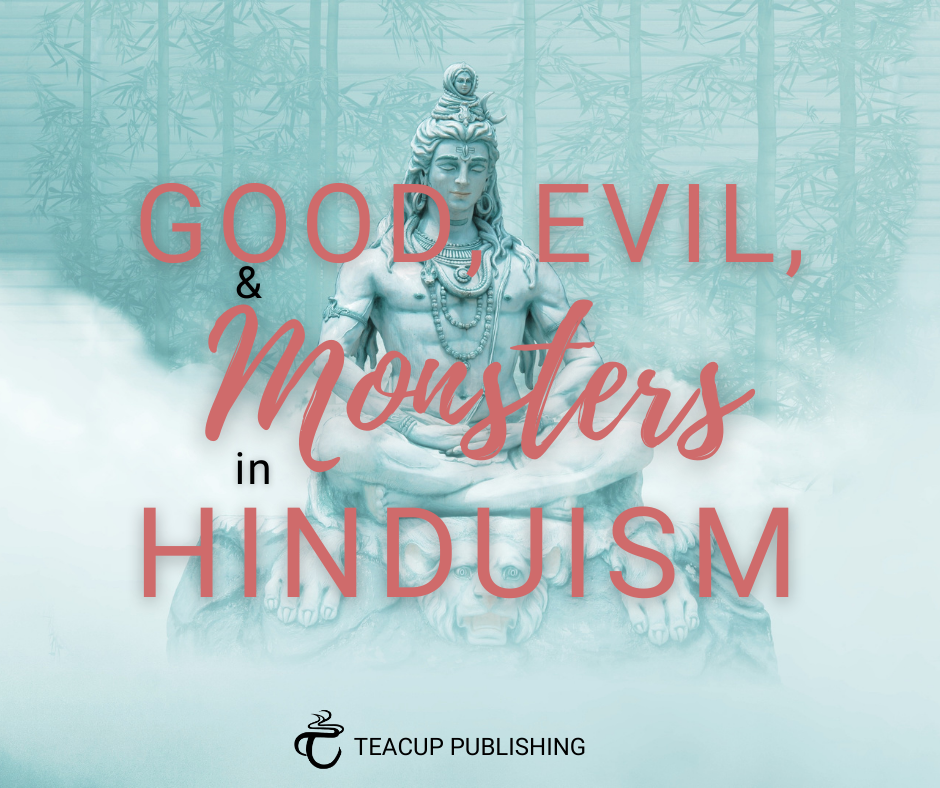It’s Monster Monday, and today’s scary creature is the kirtimukha, which is Hinduism’s predecessor to the Sumerian ourobouros. The kirtimukha raises the question of what are good, evil and monsters in Hinduism.
Where did the kirtimukha originate?
While its name literally translates into “Face of Glory,” the kirtimukha didn’t start out as just a face.
Like many stories in Hindu mythology, this one (from the Skanda Purana) begins with a power-hungry king who decides to please the gods so he could earn boons and get what he wants. Once he amasses enough power, he releases his monster, Rahu, to challenge Lord Shiva. For. His. Wife.
Come on, you already know how this is going to end. (If you don’t, I kindly suggest you read my short story, Blind.)
Lord Shiva frequently took the form of a beggar ascetic. This king clearly believed he’d be a better match for the princess, Parvati, than Shiva would be. Considering that Parvati made huge personal and spiritual sacrifices in order to choose Shiva for her husband, I’d venture a guess that the king’s efforts to break up her wedding plans didn’t impress her, either.
In a great example of how the punishment fits the crime, Shiva flashes to life a monster from his third eye. An insatiable demon lion manifested to challenge the king’s own unmet desires.
Rahu cowers in fear and begs for Shiva’s mercy. So Shiva forgives Rahu and now has to contend with his newest pet, a ravenous lion, after depriving it of a meal.
What is a kirtimukha?
Shiva tells it to eat its own feet and hands, so the monster starts at its tail and devours its own body until only its face remains. Shiva names the resulting creature, Kirtimukha, and decrees that his admirable monster should grace the doors to his temples.
The kirtimukha represents Shiva’s protection and acts as a threshold guardian. As it engages in the act of swallowing at the entrance to a temple, the kirtimukha represents swallowing one’s ego in order to attain salvation.
So it’s an ourobouros?
Not exactly.
We know the Death-Eaters in Harry Potter use a snake eating its own tail as their symbol for immortality. Life swallows life.
The Sumerians called this monster the ourobouros. The difference between it and the kirtimukha is the form it takes—the kirtimukha looks like a lion with his mouth wide open.
Good or Evil?
As the creation of Lord Shiva, the kirtimukha isn’t evil. Shiva created it for a purpose, to defeat the king and his evil desires. As I discussed in my previous post, being a monster or a beast doesn’t make someone inherently bad or evil. In this case, the kirtimukha exists exactly as its god wanted.
Good, evil, and monsters in Hinduism exist separately. While good and evil are intrinsically linked, monsters occur across the moral spectrum.

